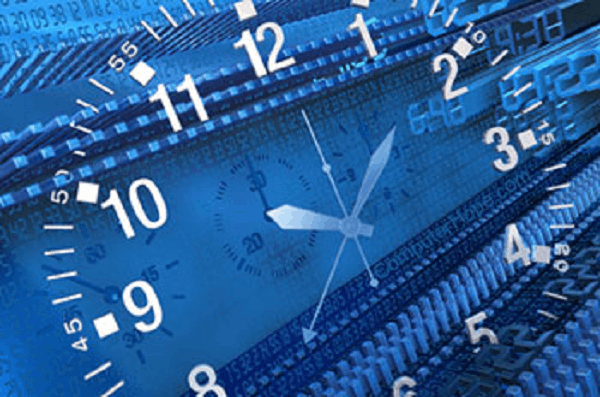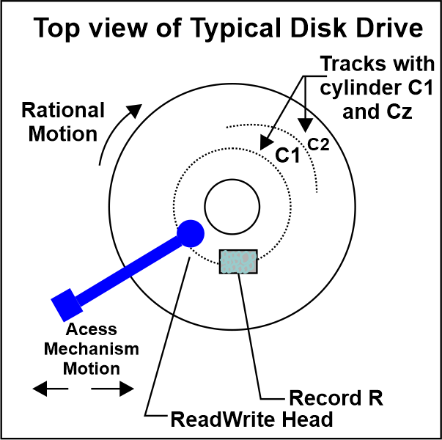What is Access Time?
Access time is when a computer can recover data from a storage device, such as a hard drive or solid-state drive. It is an important factor that can affect the overall performance of a computer, as a longer access time means it will take longer to recover the data and perform the requested task. Access time is typically measured in nanoseconds (billionths of a second) or milliseconds (thousandths of a second). In general, a shorter access time is better because the computer can recover data more quickly.

There are several factors that can affect access time, including the type of storage device being used, the layout of the data on the storage device, and the speed of a storage device's and computer's interface. A computer can run better and be more effective if these elements are understood and steps are taken to optimize access time.
There are several factors that can affect access time, including:
1. Type of storage device being used: The type of storage device being used can significantly affect access time. Hard drives and solid-state drives (SSDs) are the most common types of storage devices, and they have different access times.
Hard drives store data on a spinning disk, and to store the data, the disks must physically be there. This process takes time, which can increase the access time. Hard drives are also prone to latency, which is the delay in the time it takes for the drive to start spinning and for the read/write head to access the data. These factors can contribute to a longer access time for hard drives.
SSDs, on the other hand, do not have moving parts and can retrieve data much more quickly. They use memory chips to store data, allowing them to access data instantly. As a result, SSDs generally have faster access times than hard drives. They are also less prone to latency, as they do not have to wait for the drive to spin up or for the read/write head to access the data.
SSDs are generally considered faster than hard drives due to their faster access times. They are also more reliable and durable, as they do not have moving parts that can fail. For these reasons, many users choose to use SSDs as their primary storage device to improve the performance of their computers.
2. Layout of the data on the storage device: The layout of the data on the storage device can significantly affect access time. If the data is organized in a way that makes it easy to access, the access time will be shorter. Conversely, the access time will be longer if the data is scattered throughout the storage device.
There are several techniques that can use to improve the layout of the data on the storage device and optimize access time. One of the most effective techniques is disk defragmentation, which rearranges the data on the storage device to store it in a contiguous block. It takes less time for the computer to locate and access the data, as it does not have to search for it in multiple locations.
Another technique is disk partitioning, which involves dividing the storage device into separate sections, or partitions, each of which can be treated as a separate drive. This allows the operating system to access data more quickly, as it knows exactly where to find it.
In addition to these techniques, it is also important to keep the storage device free of unnecessary files and delete any files that are no longer needed. This can help free up space and improve the overall layout of the data on the storage device.
Overall, optimizing the layout of the data on the storage device can help improve access time and make the computer more efficient.
3. Speed of the interface between the storage device and the computer: The speed of the interface between the storage device and the computer can affect access time. The interface is the connection between the storage device and the computer, and it can be either internal (inside the computer) or external (connected to the computer through a port).
Internal interfaces, such as SATA and PCI Express, are typically faster than external interfaces, such as USB and FireWire, as they have a direct connection to the computer's motherboard. This allows them to transfer data more quickly and improve access time.
External interfaces, on the other hand, rely on a separate connection, which can introduce additional latency and slow down access time. The port can also limit the interface's speed it is connected. For example, a USB 3.0 interface will have a faster access time than a USB 2.0 interface, as it can transfer data at a higher speed.
Overall, using a faster interface can help improve access time and make the computer more efficient. When selecting a storage device or improving a computer's performance, the interface's kind and speed should be considered.
4. Performance of the computer's processor: The performance of the computer's processor can affect access time by determining how quickly the computer can retrieve and process data. A faster processor with a higher clock speed and more cores will be able to retrieve data more quickly and improve access time.
Remembering that the processor is just one of several elements that might impact access time is crucial. Other factors, such as the type of storage device being used and the layout of the data on the storage device, can also have a significant impact on access time.
Overall, having a faster processor can help improve access time, but it is not the only factor to consider when optimizing the performance of a computer. It is important to consider all factors that can affect access time and take steps to optimize them to achieve the best performance.
5. Operating system: The operating system plays a crucial role in managing access to data and can significantly affect access time. A more efficient operating system with better resource management and optimization can help improve access time by reducing the time it takes to locate and retrieve data.
One way that the operating system can affect access time is through its file system. The file system is responsible for organizing and storing data on the storage device, and different file systems have different characteristics that can affect access time. For example, some file systems are designed for fast access to small files, while others are optimized for large files or a large number of files. Choosing the right file system for the specific needs of the computer can help improve access time.
The operating system can also affect access time through resource management and optimization. A well-optimized operating system can allocate resources more efficiently and reduce the time it takes to access data. This can be achieved by preloading frequently used data into memory and prioritizing access to data based on the system's needs.
Overall, the operating system plays a crucial role in managing access to data and can significantly affect access time. Choosing an efficient operating system with good resource management and optimization can help improve the performance of a computer.
6. Amount of available memory (RAM): The amount of available memory (RAM) can affect access time by determining how quickly the computer can retrieve data. Having more memory allows the computer to access data more quickly, storing more data in memory and retrieving it more efficiently.
It's crucial to remember that there are other factors besides memory size that can impact access times. Other factors, such as the type of storage device being used and the layout of the data on the storage device, can also have a significant impact on access time.
7. Workload of the computer: The workload of the computer can affect access time by determining how busy the computer is and how much it has to do. If the computer is heavily taxed with multiple tasks, it may take longer to access data, and the access time will be longer.
For example, if the computer runs multiple programs simultaneously or performs resource-intensive tasks, it may take longer to access data from the storage device. This is because the computer has to divide its resources and attention between the different tasks, which can reduce the speed at which it can access data.
On the other hand, if the computer is only running a few programs or is idle, it will have more resources available and can access data more quickly.
Overall, the computer's workload can impact access time, and reducing the number of programs or tasks running on the computer can help improve access time and the overall performance of the computer.

Conclusion:
In conclusion, access time is the time it takes for a computer to retrieve data from a storage device, and it is an important factor that can affect the overall performance of a computer. There are several factors that can affect access time, including the type of storage device being used, the layout of the data on the storage device, the speed of the interface between the storage device and the computer, the performance of the processor, the operating system, the amount of available memory, and the workload of the computer.
Optimizing these factors can help improve access time and make the computer more efficient. Some of the most effective techniques for optimizing access time include using an SSD instead of a hard drive, regularly defragmenting the hard drive, using a faster interface, installing a faster processor, choosing an efficient operating system, and reducing the workload of the computer.